Conformance
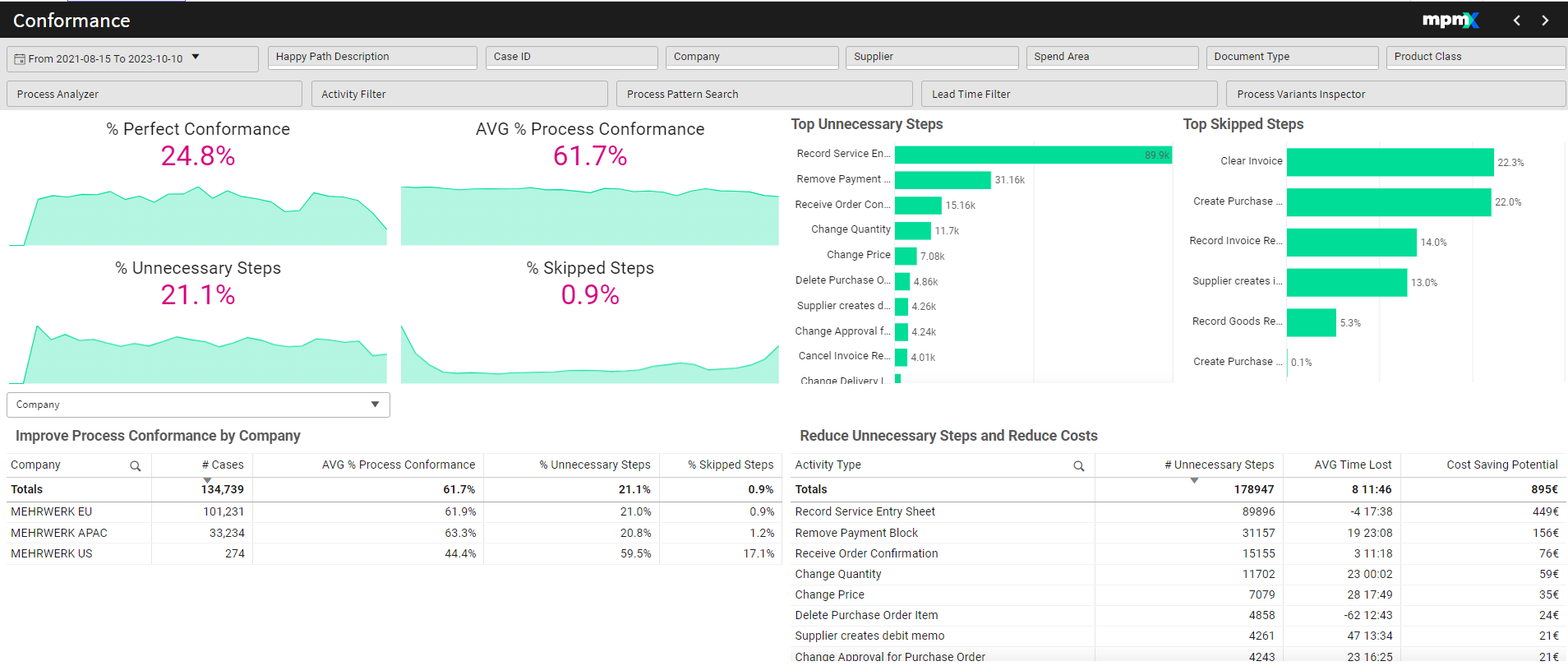
Type: Dashboard
Functions
-
Compare a process model with the as-is process
-
Quantify deviations with the process performance indicators, like process conformance or perfect conformance
-
Identify and monitor the unnecessary or skipped process steps
-
Identify critical process deviations
-
Flexible analysis of any given process context to validate the most effective standardization measures
Business Benefits
-
Overview and monitoring of the current process conformance level
-
Reduction of critical process deviations
-
Harmonization and standardization of processes
Interpreting the Visualizations
Key Figures
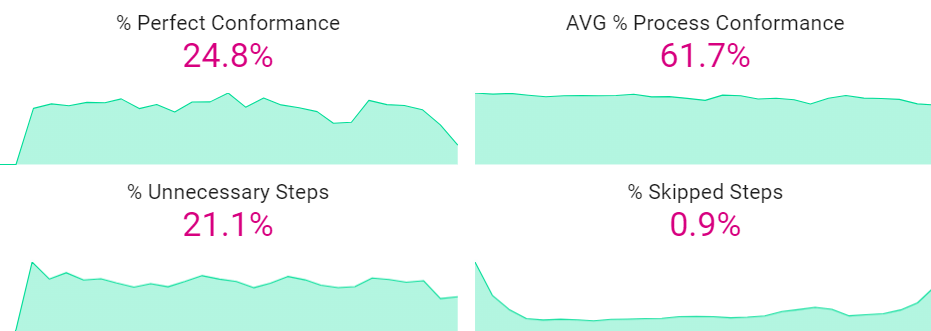
Use the key figures to get a quick overview of the conformance situation.
% Perfect Conformance
- Shows the percentage of cases without a single deviation from the process model.
- A process with 100% would have cases that are perfectly aligned with the model.
AVG % Process Conformance
- Shows how much the current process (all cases and variants) conforms to the process model (=Happy Path(s)).
- A process that does not conform to its model can deviate in a few ways. It can have added steps not in the model, it can skip steps the model requires, or it can do steps out of order.
% Unnecessary Steps
- Shows the percentage of steps being taken in the process that are not required by the model.
- Here it is good to check if the extra steps are in fact wasted time in the process or should be added to the model as a required step.
% Skipped Steps
- Shows the percentage of steps in the process model that do not occur in the existing cases.
- Here it is good to check if the skipped steps are truly necessary or can be removed from the process model.
💡 Note: Conformance deviations can help identify two things:
- errors in how cases are being performed
- changes that ought to be made to the model to reflect reality or a changed situation
Top Unnecessary Steps
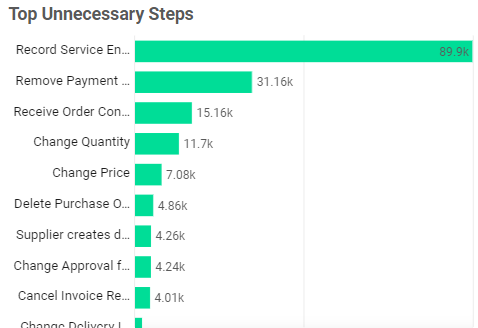
Select one or more bars in the chart to filter the dashboard. For instance, if the top unnecessary step mostly occurs with a particular supplier or product.
Look for steps that may indicate errors in the process or change events which may indicate rework as top optimization potentials.
Reducing a particular high unnecessary step will:
- increase process conformance
- increase control and standardization of the process
- reduce the complexity of the process
- decrease the rework in the process
Top Skipped Steps
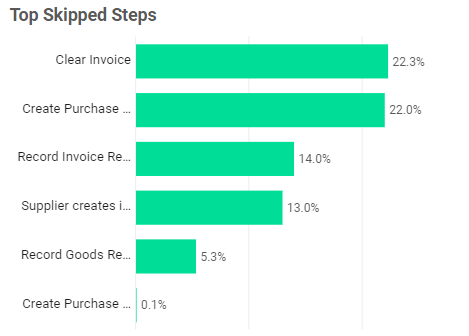
Another insight could be discovering that parts of your process model do not reflect reality anymore because the process has evolved so that some steps are no longer necessary, so the model should be modified.
Improve Process Conformance By (X) Table
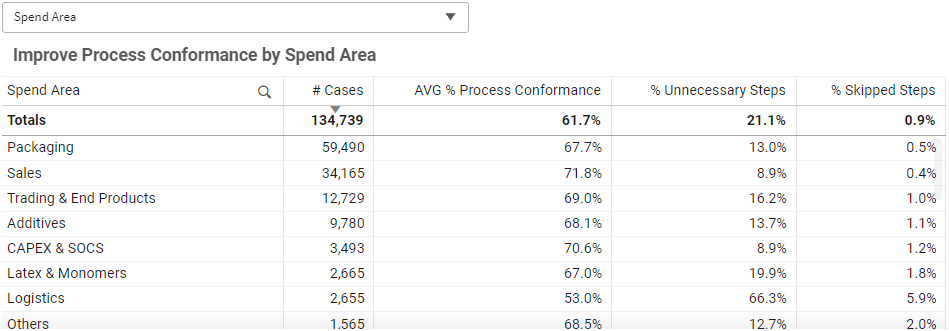
Reduce Unnecessary Steps and Reduce Costs Table

- Each step in this table does not occur in the process model.
- The columns can be sorted to show the highest number of cases or the greatest average additional time for cases that include this process step.
- For every activity listed the table shows the number of unneccessary steps in the current process that do not exist in the process model.
- The Time Lost shows the average/median additional time for cases that included these unneccessary activities.
- The last column gives the Cost Saving Potential if the given unneccessary step would be eliminated.
- The columns can be sorted to identify the activities with the highest numbers to help prioritize where you should take action.
- A step that only occurs in a small number of cases, but adds a large amount of time to the process, may not affect many people, but will skew your averages and could also mean losing customers or suppliers when they occur.
- Identifying Unnecessary steps that occur in a large number of cases and also have a moderate impact on time lost could have a broader impact overall.
Additional Analysis
Happy Path Description-Button
